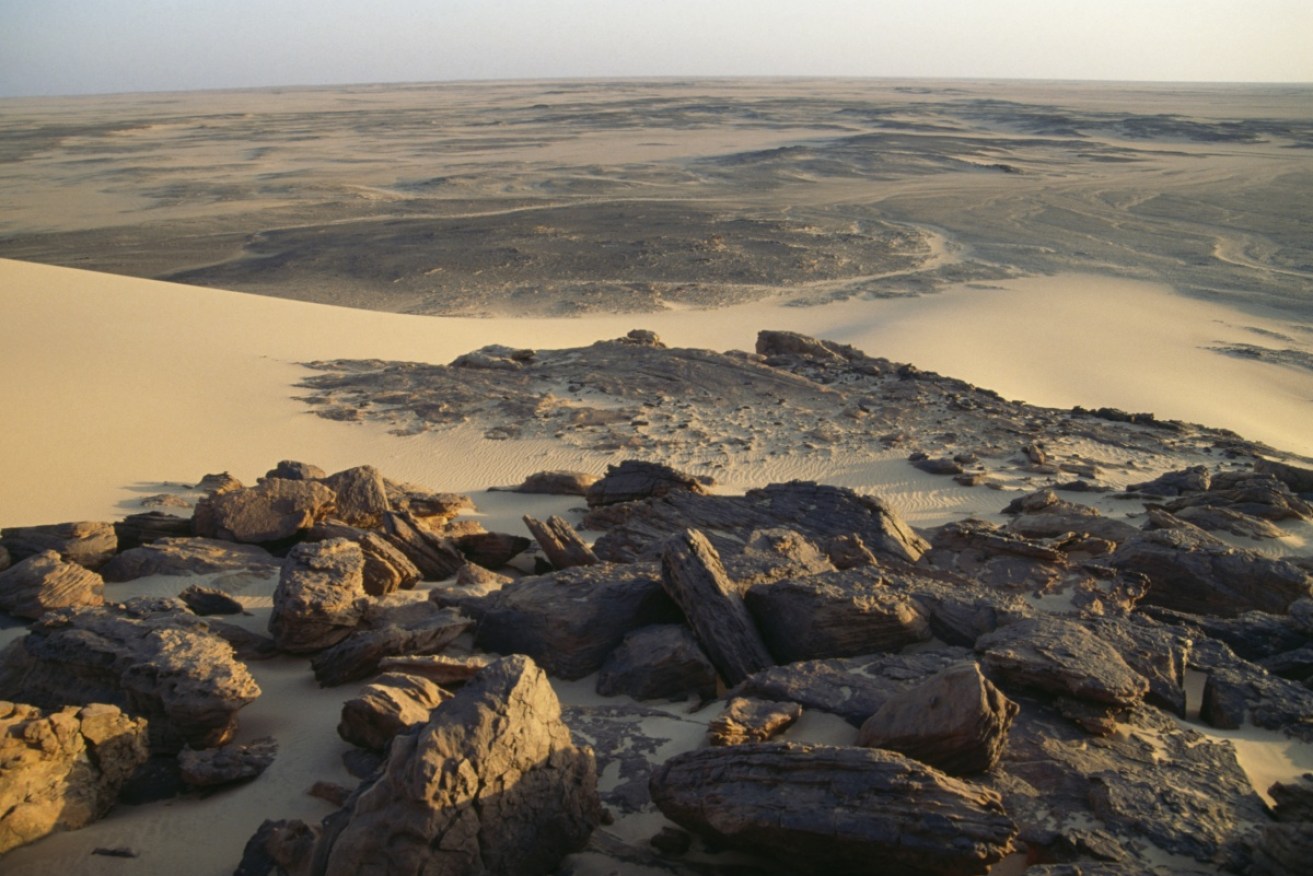“We didn’t expect to see these inclusions at all,” he said. “It’s interesting to me what inclusions just tens of nanometers [billionths of a metre] large can tell us about protoplanets about 6000 kilometres in diameter.”
Diamonds from long-lost planet found in desert asteroid


Sudan's Nubian Desert, where the asteroid landed in 2008. Photo: Getty
What if diamonds could fall from the sky? It seems they just might – and, yes, there is much more to this story.
Ten years ago, a meteorite exploded in the sky above Sudan’s Nubian Desert. An Arizona astronomer spotted the asteroid, now known as Almahata Sitta, as it was heading for Earth. Colleagues and casual stargazers helped him track the rock until it exploded.
Then students from the University of Khartoum searched for fragments, eventually recovering more than 600 pieces from the 83-tonne asteroid. It was the first time scientists had traced an asteroid in the sky to a rock they could pick up.
But, as The Washington Post says: “That is not even the coolest thing about Almahata Sitta. Not nearly.”
A new study published in the journal Nature Communications reports that the meteorite contained tiny diamonds.

NASA’s Peter Jenniskens finally found the meteorite in 2009. Its dark colour stood out from the yellow sand of the Nubian Desert. Photo: NASA
Those diamonds contain even tinier impurities called inclusions. And within those inclusions are signs of a long-lost planet as large as Mars – a 4.5-billion-year-old relic destroyed during the solar system’s earliest days.
Astronomers think swarms of protoplanets – balls of gas, dust, and rock about the size of Mercury or Mars – once swirled around our young sun.
Millions of years ago, they collided and broke apart or were pushed out of the solar system. Their remains make up the planets of today’s solar system, along with asteroids and other rocky debris.
One called Theia is believed to have crashed into a young Earth, ejecting a large amount of debris that later formed the moon. Another might have been responsible for the fate of the dinosaurs.
For this new study, author Farhang Nabiei, from Switzerland’s Ecole Polytechnique Federale de Lausanne, used an electron microscope to examine a piece of ureilite picked up when Almahata Sitta crash-landed in Sudan’s Nubian Desert in 2008.
Diamonds from a lost planet – In a paper published today, #diamonds discovered in a meteorite indicate that the #meteorite was originally from a lost protoplanet in the early solar systemhttps://t.co/9gSkw5un2B
— Nature Communications (@NatureComms) April 17, 2018
The microscope revealed the diamonds in the meteorite contained iron- and sulphur-bearing minerals that most likely formed under enormous pressure – more than 20 gigapascals. (This is a measure of billions of tonnes of rock pushing down from above, producing a crushing force so high it must have happened on a protoplanet.)
“It is the first time that we found inclusions in extraterrestrial diamonds,” Dr Nabiei said.
He said the study provided convincing evidence that the ureilite parent body was one of the “lost” planets before it was destroyed.








